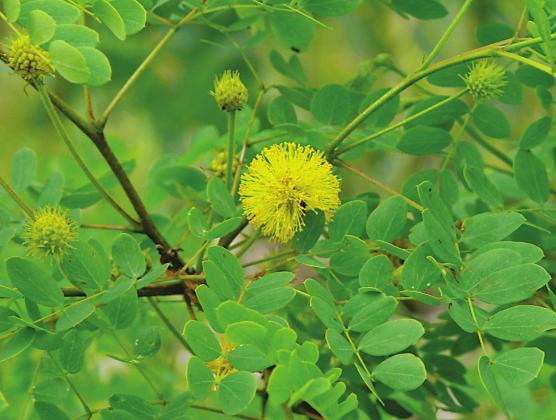Observations and Recollections from Around the Yard on an Early Spring Day
I decided to spend some time just walking around and observing the new spring growth in the yard. To put things in context, we started building the house in 2000 on property that had been overgrazed and overbrowsed for a long time. It is about 2000 feet in elevation and, like most such Hill Country property, has rather thin soil and is somewhat rocky. It is mainly covered with live oaks, post oaks, blackjack oaks and a few patches of cedar.
We completed building in 2001 and at the same time constructed a seven-foot fence around about an acre around the house. Once we had a fence, we immediately began planting a series of native trees, shrubs, and forbs in 2001 and 2002.
I began my walk near the front fence in an area that had me puzzled. A few years after we moved in, my wife planted some bluebonnets, Engelmann daisy, prairie verbena, and maybe a few other native forbs in an area of native soil. Bluebonnets are annuals, meaning they only live one year and make seeds for next year. Like most legumes, they produce seed pods which split open in the late summer or fall to release the seeds.
For the first year or so, we had only a few bluebonnets but lots of Engelmann daisy. As time went on, the area covered by bluebonnets gradually increased so that in recent years, we had a large area covered with bluebonnets every year. But this year, there are only a handful of bluebonnets to be found. I have no idea why. There are still lots of Engelmann and verbena.
Just a few steps from where the bluebonnets were, we planted a retama on one side of the driveway in 2001, and a golden ball lead tree on the other side of the driveway. This is an area with full sun and one which we didn’t expect to water, so these two rather xeric small trees seemed to make sense. Both grew quite well, and both flowered after a rain. We were quite happy with them.
After several years, we discovered a golden ball lead tree in the back yard. Since I am pretty sure there are no naturally growing ones anywhere in the area, the seeds obviously came from the one we had in front, with the help from some bird or furry creature. Eventually the original golden ball lead tree declined and died, but by then we had two healthy ones in the back yard.
In the last few years, the retama has begun to show its age, and finally, last year, I decided to cut it down, leaving a six-inch stump. As I expected, from the stump grew about six or eight six-foot tall sprouts which appear really healthy. I expect to see blooms on them later this year.
A few feet from the original golden ball lead tree, in 2001, we planted a possumhaw. From the beginning, it began to look chlorotic (yellow leaves—usually caused by high pH in the soil and an iron or other mineral deficiency). It is still there today, still chlorotic, still about the same size as when we planted it, and still producing lots of berries. Over the years, the birds have scattered the berries all over the yard as evidenced by the large number of new possumhaws all over the yard—most all of them without the yellow leaves of the first one.
A little further down the fence, I came to the coral honeysuckle we planted to climb up the fence. We enjoyed it blooming from February through December every year. It has now almost totally died, presumably of old age. But just a few feet away, a new coral honeysuckle has begun growing in recent years under a large live oak. It has now completely overtaken a native grape vine growing there and is now much larger than the original vine we planted. There is also now another large coral honeysuckle in the back yard which seems to be quite healthy.
Also now growing under the large live oak is a possumhaw, which, growing in the shade, is now about 12 feet tall. Not far from that is an escarpment black cherry growing under an adjacent large live oak which is now at least 18 feet tall up in the canopy of the oak. The nearest escarpment black cherry I know of is about 500 yards away.
There are a lot more observations and recollections to discuss, but that will have to be the subject of a subsequent column.
Until next time…
Jim Stanley is a Texas Master Naturalist and the author of the books “Hill Country Ecology,” “Hill Country Landowner’s Guide” and “A Beginner’s Handbook for Rural Texas Landowners.” He can be reached at <jstmn@ktc.com>. Previous columns can be seen at <www.hillcountrynaturalist.org> .

